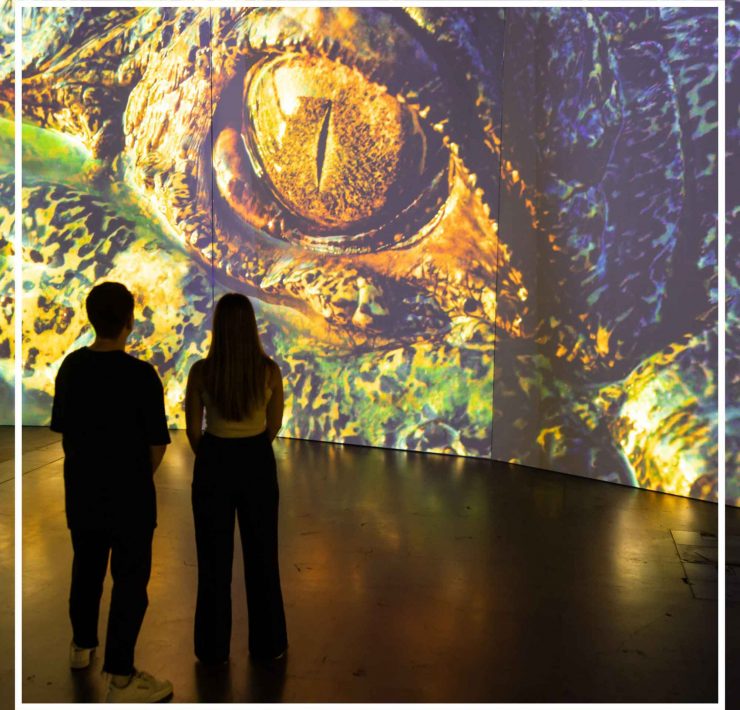This Stunning Mountain Lake Might Be Japan’s Most Underrated Natural Beauty

Return to Wonder – Japan Endless Discovery
Walking around Lake Inawashiro – known colloquially as “Tenkyo-ko”, AKA “the lake of heaven’s reflection” – you’ll hear bells.
Sitting to the south of Mount Bandai, the lake is one of Japan’s best-kept local secrets. Where the wider world is well and truly across Mount Fuji’s glorious peaks, Nara’s deer-roamed temples and even Okinawa’s tropical climate, this stunning beauty and its surrounds are one of Tokyo’s prime weekender spots.
Lake Inawashiro is one of Fukushima Prefecture’s most beautiful natural sights, complete with surrounding forest walks, quaint rural towns, ancient temples and the chance to spot wildlife from afar – including black bears, hence the bells.
Bear bells are used across the world to deter bears from wandering onto walking tracks, though the kind you find hikers using at Bandai-Asahi National Park are, of course, much more ornate. Either attached to backpacks, long sticks or tied around tiny wrists, the gold bells are often adorned with a red ribbon and held by children, leading their pack like pied pipers, sans instrument.
You can buy them at various stalls near landmarks or walk entrances, though the science is out as to whether they do much. In summer, cicadas create a chorus so loud we’re sure the bears don’t notice: still, the jingles ring through the forest, almost as if they’re cheering you on, not that you’ll need much motivation.
Here’s the best way to spend a day around Lake Inawashiro, from historic castles to one-of-a-kind temples and the best onsen after a hot hike.
Making The Most Of The Surrounds
While the national park’s open year-round, summer’s the nicest time to visit. Sure, winter boasts ski fields and cosy lodge and spring offers cherry blossoms and the migration of swans to the area, but a summer dip is the perfect way to end a walk through the forest surrounds. With trees right up to the sand, groups park out under the shade, settling in for the day.
Hiring a rental car is your best option to make the most out of a trip to the national park. It’s a picturesque three-hour drive from Tokyo, plus it’ll make getting around easy. Otherwise, a shinkansen to Koriyama then a transfer to Inawashiro Station works, too, though you’ll be relying on taxis or buses between sites.
Before reaching Lake Inawashiro, we’d recommend stopping in Aizuwakamatsu, a historic city with a re-created castle adorned with a seven-story tenshu tower. Converted into a museum, the castle provides an insight into the region’s war-ravaged history, which dates back to the 12th century – plus, the view from the top lets you take in Mount Bandai in all its might.
Another essential stop on the drive to the lake is Sazaedo Temple. Unlike any other structure in Japan, the temple is a wooden pagoda with a double-helix staircase, similar in design to da Vinci’s Chateau de Chambord.
The architectural anomaly was built in 1796, and its brain-bending wonder holds up. Walking up and down its steep slopes is a one-of-a-kind experience, with each step titling into the centre pillar, resembling more funhouse than other Shinto temples.
Nearby lays a shrine dedicated to the 19 local teenage soldiers who took their own lives after defeat in the 1868 civil war, located in the edge of the forest on Mount Iimori.
It’s Water Time
But back to the lake: what makes it so special? Well, it’s huge, for one: spreading approximately 100 square kilometres, standing at its shores gives the illusion of staring at a calm sea. In summer, boat tours, jet-skiing and kayaking are all popular activities.
The region’s a fair few degrees cooler than Tokyo in the summertime, but the sticky weather still makes the water irresistible. Kayak away from the shore, and you’ll be lost in the serenity: due to the water’s high acidity, it reflects the skies and mountains above in a pristine vision.
Around the shore, you’ll find a few stops and spots for food and drink – we recommend ordering cold udon noodles, a local speciality made with the lake’s water.
Inawashiro is just one of the region’s unique bodies of water: behind Mount Bandai is Goshikinuma Walk, home to the five-colour ponds. Mt. Bandai last erupted in 1888, creating a cascade that created these ponds and leaving each with volcanic minerals.
Because of those reserves, they shift day-to-day in colour from cobalt blue to a burning orange or a surreal green.
The 4km walk passes eight ponds: it’s never particularly strenuous, with many locals bringing dogs and small children. Each pond is more stunning than the previous, with schools of giant koi-fish often swimming to the shore in hopes of food at Lake Bishamon.
Grab an ice-cream on the walk: the local special is a salty-fruity concoction that’s almost as bizarrely beautiful as the pond’s vibrant colours.
To finish off, indulge in more rest and relaxation at a natural onsen. The nearby Urabandai Royal Hotel’s outdoor baths are a perfect way to soothe after the hike. You deserve it.
This article originally appeared on Junkee.
—
Jared Richards was a guest of Japan National Tourism Organisation.
—
(Lead image: T. Satoh / JNTO)









